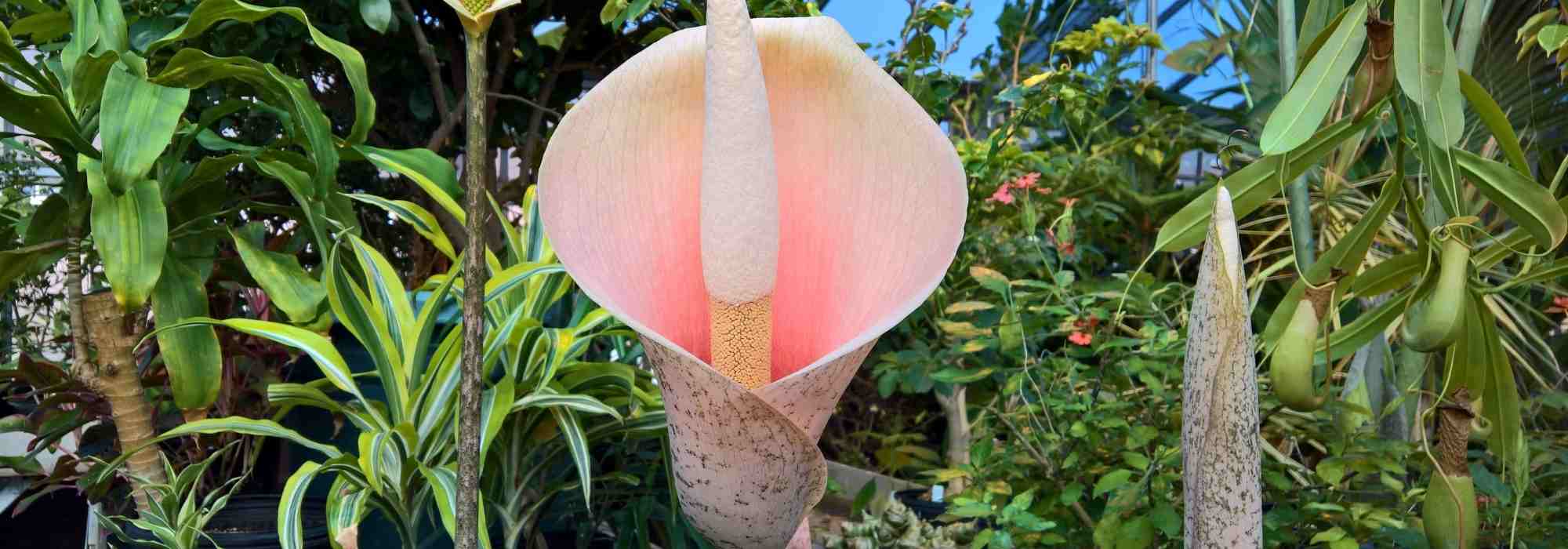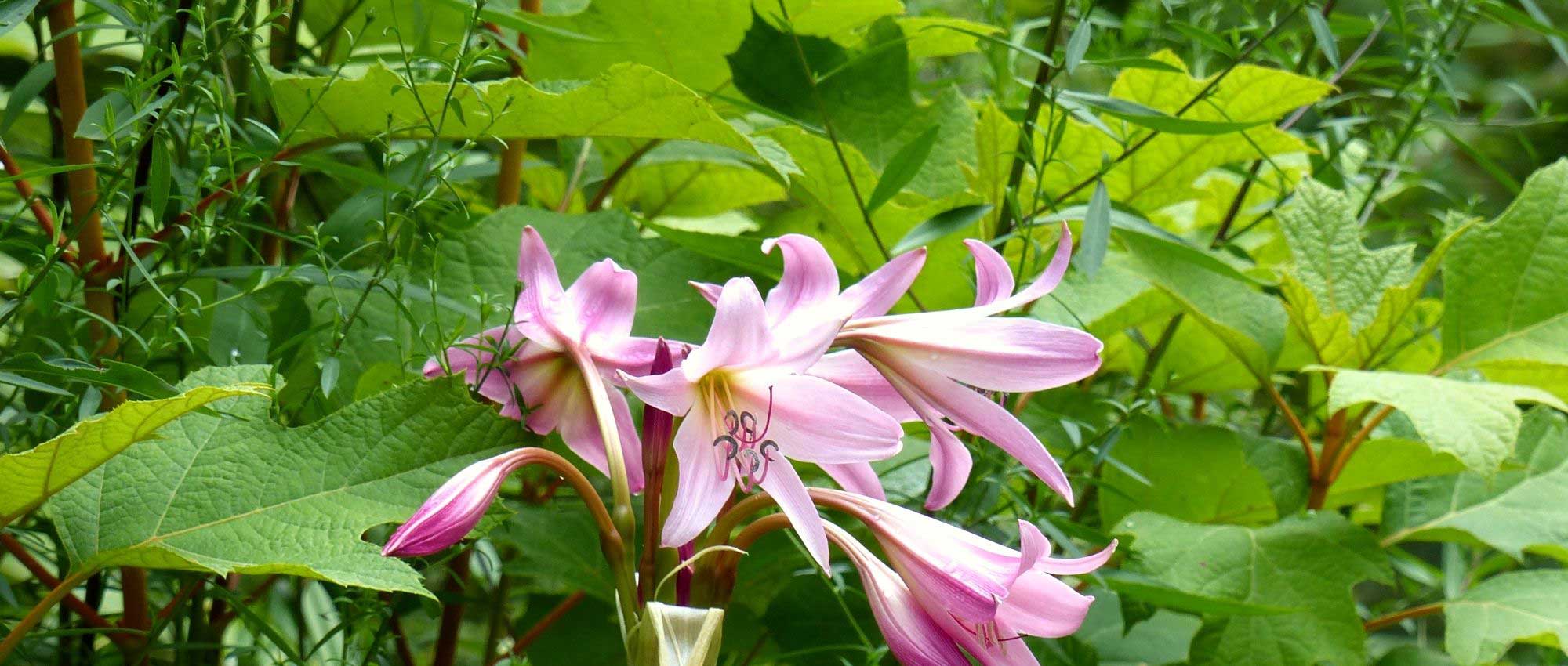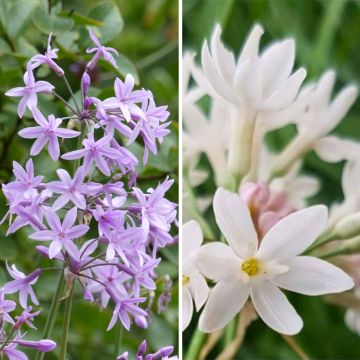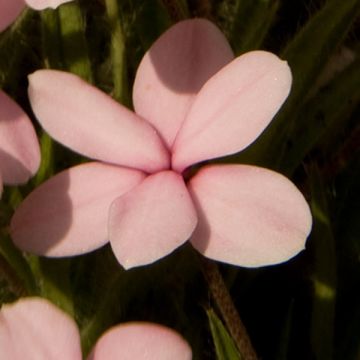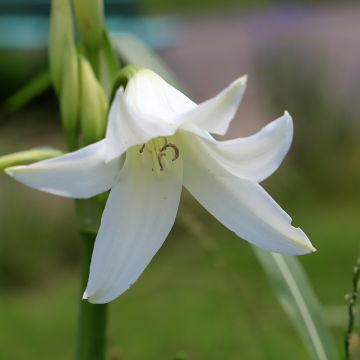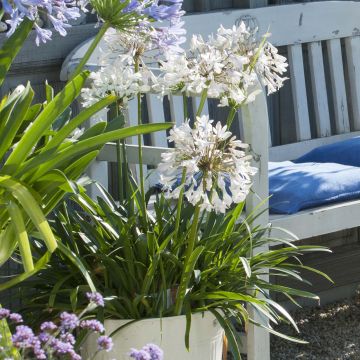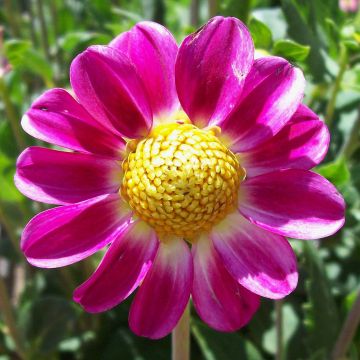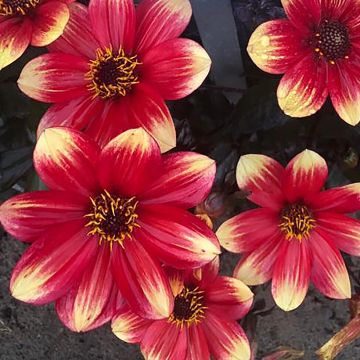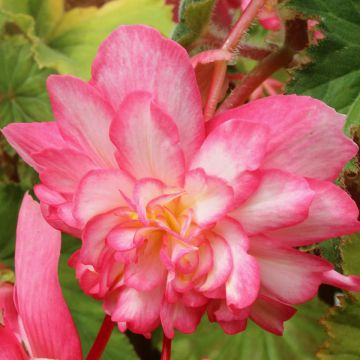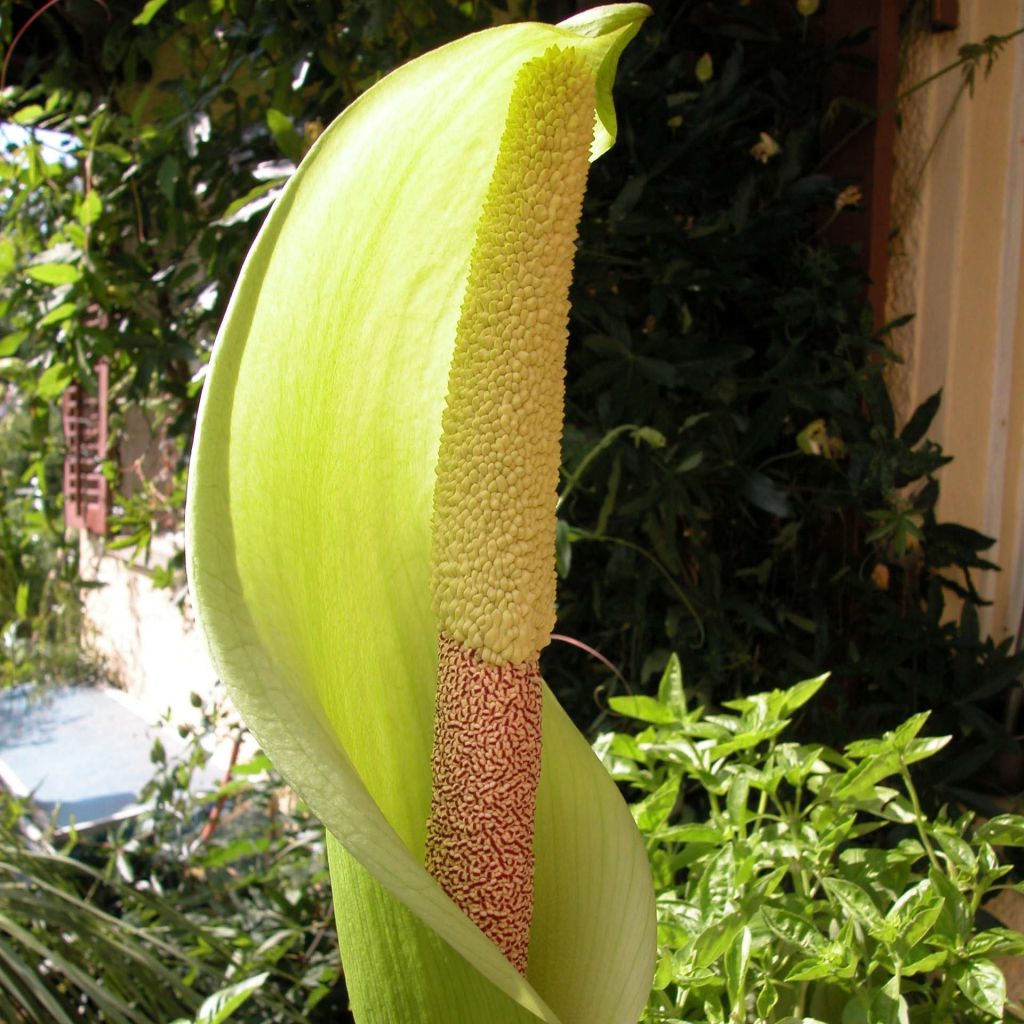

Amorphophallus napalensis - Voodoo Lily
Amorphophallus napalensis - Voodoo Lily
Amorphophallus napalensis
Nepalese Voodoo Lily
A big first for me,
Aurélie, 14/05/2025
Special offer!
Receive a €20 voucher for any order over €90 (excluding delivery costs, credit notes, and plastic-free options)!
1- Add your favorite plants to your cart.
2- Once you have reached €90, confirm your order (you can even choose the delivery date!).
3- As soon as your order is shipped, you will receive an email containing your voucher code, valid for 3 months (90 days).
Your voucher is unique and can only be used once, for any order with a minimum value of €20, excluding delivery costs.
Can be combined with other current offers, non-divisible and non-refundable.
Home or relay delivery (depending on size and destination)
Schedule delivery date,
and select date in basket
This plant carries a 6 months recovery warranty
More information
We guarantee the quality of our plants for a full growing cycle, and will replace at our expense any plant that fails to recover under normal climatic and planting conditions.

Would this plant suit my garden?
Set up your Plantfit profile →
Description
Amorphophallus napalensis, is a curious plant that grows wild in the clear understorey of the mountains in Northeast India. This relative of arums has a very large tuber, blooms in spring, then develops a single large serrated leaf before going dormant in autumn. The mature plant produces an unusual inflorescence, close to the ground, shaped like a long pale yellow cream cone on the inside and greener on the outside, surrounding a spadix that is brown-pink at the base but yellow cream in the upper half. Like most Amorphophallus species, this flowering emits a rather unpleasant odour. In theory, hardy down to -8°C, this species is easier to grow in a large pot that is kept dry in winter, as its roots do not tolerate wet soil during that time of year.
Amorphophallus napalensis, known as the Voodoo lily by English speakers, belongs to the large family of Araceae and is endemic to the region of the Eastern Himalayas in India, where it can be found at high altitudes, especially in Sikkim and Assam, Nepal, Bhutan, Bangladesh, and northwest Myanmar. These regions have a tropical climate with two distinct seasons. It is a perennial herbaceous plant with a large tuberous root.
The life cycle of Amorphophallus napalensis is quite short, from the moment the leaf emerges from the ground in May-June to when the plant goes dormant at the end of summer or early autumn. This Amorphophallus can reach a height of about 1m (3ft). In spring, a green stalk mottled with white emerges from the ground, which will bear the single leaf. It grows rapidly and at its tip, the leaf blade unfolds like a parasol, divided multiple times into oval-shaped, shiny, lobed leaflets with visible veins. Flowering occurs on plants several years old, emerging above the ground, at the base of the plant, in April-May, before the foliage. The inflorescence is a spathe, resembling a large arum cone, with a central column called a spadix. The spathe measures 50cm (20in) in height. This inflorescence will be pollinated by flies attracted to its scent, which disappears once pollination occurs. The fruiting is a tight cluster of rounded fruits that range from yellow to light red.
The cultivation of Amorphophallus napalensis is mainly done in a very large pot, although this species can be grown in the ground in mild regions if the root is protected from rain in winter. Burying the pot in the garden during the growing season allows it to be sheltered in winter. It is an original and lush plant of clear understories, which will also be a choice subject for a greenhouse or conservatory for plant enthusiasts. It can be paired with ferns, Fatsias, or non-spreading Fargesia bamboos, for example.
Amorphophallus napalensis - Voodoo Lily in pictures


Plant habit
Flowering
Foliage
Botanical data
Amorphophallus
napalensis
Araceae
Nepalese Voodoo Lily
Himalayas
Planting and care
Plant Amorphophallus napalensis in a semi-shaded or slightly sunny location, in light soil, rich in humus (forest soil), remaining moist from May to September. A mixture of peat soil, sand, bark, and good quality compost will be suitable. However, the soil should be dry in winter. Regular watering should be provided during the entire growth period, but without excess: a constantly waterlogged soil can cause the large rootstock to rot.
Cultivating it in open ground is quite delicate, except in our regions that are truly mild in winter, provided that the stump is kept dry from October to March. In this case, in September, you will place a good layer of dead leaves or straw on the stump, which you will cover in October with a plastic sheet to keep it dry throughout the winter.
Pot cultivation: much easier, it allows you to protect the bulb from frost and humidity in winter. The pot will be kept in a garage or a slightly heated room and taken out in April. You will choose a container of adequate size, which will be at least twice as wide and deep as the rootstock to allow the roots to develop well. Feed your plant with seaweed-based fertilizer from May to August.
Planting period
Intended location
Care
Planting & care advice
-
, onOrder confirmed
Reply from on Promesse de fleurs
Similar products
Haven't found what you were looking for?
Hardiness is the lowest winter temperature a plant can endure without suffering serious damage or even dying. However, hardiness is affected by location (a sheltered area, such as a patio), protection (winter cover) and soil type (hardiness is improved by well-drained soil).

Photo Sharing Terms & Conditions
In order to encourage gardeners to interact and share their experiences, Promesse de fleurs offers various media enabling content to be uploaded onto its Site - in particular via the ‘Photo sharing’ module.
The User agrees to refrain from:
- Posting any content that is illegal, prejudicial, insulting, racist, inciteful to hatred, revisionist, contrary to public decency, that infringes on privacy or on the privacy rights of third parties, in particular the publicity rights of persons and goods, intellectual property rights, or the right to privacy.
- Submitting content on behalf of a third party;
- Impersonate the identity of a third party and/or publish any personal information about a third party;
In general, the User undertakes to refrain from any unethical behaviour.
All Content (in particular text, comments, files, images, photos, videos, creative works, etc.), which may be subject to property or intellectual property rights, image or other private rights, shall remain the property of the User, subject to the limited rights granted by the terms of the licence granted by Promesse de fleurs as stated below. Users are at liberty to publish or not to publish such Content on the Site, notably via the ‘Photo Sharing’ facility, and accept that this Content shall be made public and freely accessible, notably on the Internet.
Users further acknowledge, undertake to have ,and guarantee that they hold all necessary rights and permissions to publish such material on the Site, in particular with regard to the legislation in force pertaining to any privacy, property, intellectual property, image, or contractual rights, or rights of any other nature. By publishing such Content on the Site, Users acknowledge accepting full liability as publishers of the Content within the meaning of the law, and grant Promesse de fleurs, free of charge, an inclusive, worldwide licence for the said Content for the entire duration of its publication, including all reproduction, representation, up/downloading, displaying, performing, transmission, and storage rights.
Users also grant permission for their name to be linked to the Content and accept that this link may not always be made available.
By engaging in posting material, Users consent to their Content becoming automatically accessible on the Internet, in particular on other sites and/or blogs and/or web pages of the Promesse de fleurs site, including in particular social pages and the Promesse de fleurs catalogue.
Users may secure the removal of entrusted content free of charge by issuing a simple request via our contact form.
The flowering period indicated on our website applies to countries and regions located in USDA zone 8 (France, the United Kingdom, Ireland, the Netherlands, etc.)
It will vary according to where you live:
- In zones 9 to 10 (Italy, Spain, Greece, etc.), flowering will occur about 2 to 4 weeks earlier.
- In zones 6 to 7 (Germany, Poland, Slovenia, and lower mountainous regions), flowering will be delayed by 2 to 3 weeks.
- In zone 5 (Central Europe, Scandinavia), blooming will be delayed by 3 to 5 weeks.
In temperate climates, pruning of spring-flowering shrubs (forsythia, spireas, etc.) should be done just after flowering.
Pruning of summer-flowering shrubs (Indian Lilac, Perovskia, etc.) can be done in winter or spring.
In cold regions as well as with frost-sensitive plants, avoid pruning too early when severe frosts may still occur.
The planting period indicated on our website applies to countries and regions located in USDA zone 8 (France, United Kingdom, Ireland, Netherlands).
It will vary according to where you live:
- In Mediterranean zones (Marseille, Madrid, Milan, etc.), autumn and winter are the best planting periods.
- In continental zones (Strasbourg, Munich, Vienna, etc.), delay planting by 2 to 3 weeks in spring and bring it forward by 2 to 4 weeks in autumn.
- In mountainous regions (the Alps, Pyrenees, Carpathians, etc.), it is best to plant in late spring (May-June) or late summer (August-September).
The harvesting period indicated on our website applies to countries and regions in USDA zone 8 (France, England, Ireland, the Netherlands).
In colder areas (Scandinavia, Poland, Austria...) fruit and vegetable harvests are likely to be delayed by 3-4 weeks.
In warmer areas (Italy, Spain, Greece, etc.), harvesting will probably take place earlier, depending on weather conditions.
The sowing periods indicated on our website apply to countries and regions within USDA Zone 8 (France, UK, Ireland, Netherlands).
In colder areas (Scandinavia, Poland, Austria...), delay any outdoor sowing by 3-4 weeks, or sow under glass.
In warmer climes (Italy, Spain, Greece, etc.), bring outdoor sowing forward by a few weeks.






























